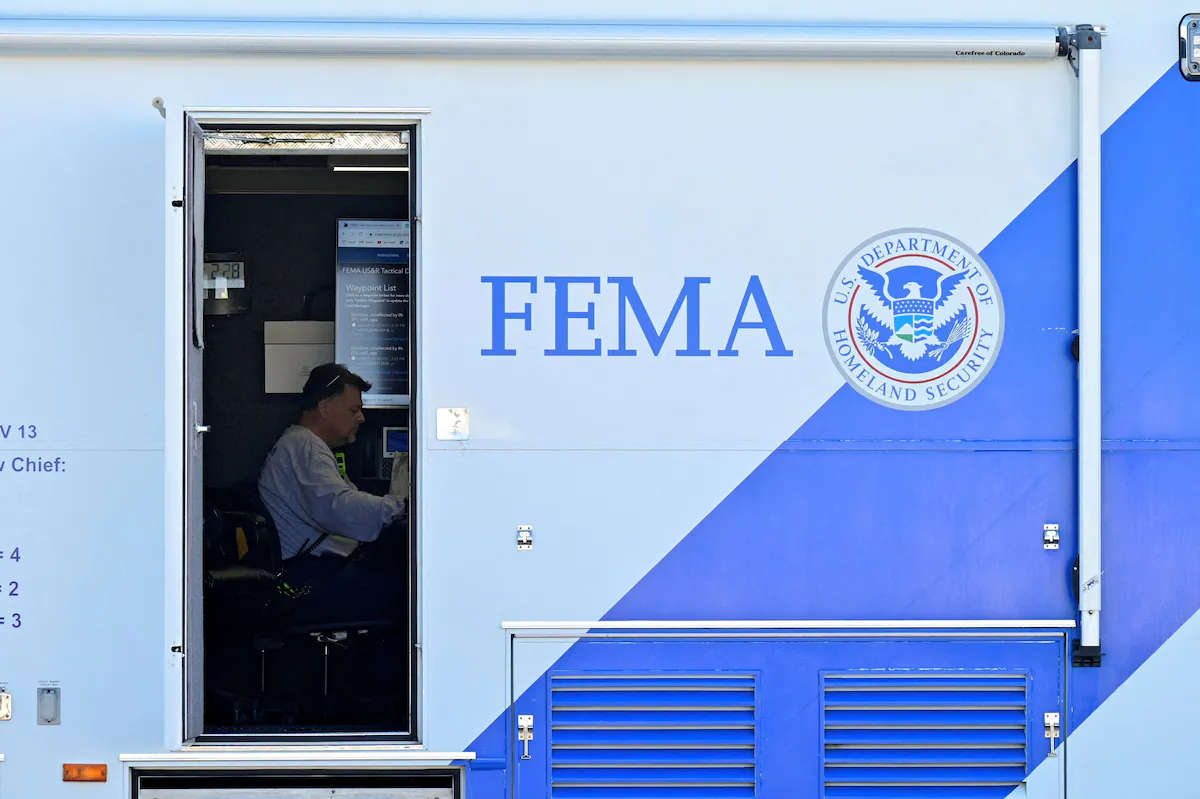

DEADLY DELAYS: TRUMP’S BUDGET CUTS SLAMMED AS TEXAS FLOOD DEATH TOLL HITS 118 “

GREATRIBUNTVNEWS–THE Trump administration’s budget cuts to the National Weather Service (NWS) and Federal Emergency Management Agency (FEMA) are being blamed for the inadequate emergency response to the devastating Texas floods, which have claimed at least 118 lives. Critics argue that the staffing shortages and funding reductions left critical positions unfilled, impairing the coordination of severe weather warnings and emergency responses.
THIS POST IS SPONSORED BY SHELL NIGERIA

The Human Cost of Budget Cuts
– 118 Lives Lost: The catastrophic flooding in central Texas has resulted in a significant loss of life, with 173 people still missing and dozens more injured or displaced.
– Inadequate Warnings: Officials attribute the National Weather Service’s failure to provide timely warnings to budget cuts, which left crucial positions unfilled at local NWS offices.
– Impact on Emergency Response: The delayed response and lack of preparedness have been criticized, with many questioning whether better forecasting and emergency planning could have saved lives
The Role of Budget Cuts
– $3.6 Billion Cut: The Trump administration’s budget cuts to NOAA and FEMA have been criticized for undermining disaster preparedness and response efforts.
– Staffing Shortages: The cuts have resulted in significant staffing shortages at NWS offices, including the loss of experienced meteorologists and hydrologists.
– Impact on Disaster Response: Experts warn that these cuts will continue to have devastating consequences, particularly in the face of increasingly frequent and severe weather events .
Response and Recovery Efforts
– Search and Rescue: Authorities are working to locate the missing and provide support to affected communities.
– Federal Assistance: President Trump has signed a major disaster declaration, making federal assistance available for recovery efforts.
– Criticism and Concerns: Critics argue that more needs to be done to address the root causes of these disasters and to improve emergency preparedness and response efforts
Deployments of critical resources, such as tactical and specialized search and rescue teams, were delayed as a result of a budget restriction requiring Homeland Security Secretary Kristi L. Noem to approve every purchase, contract and grant over $100,000, according to a dozen current and former FEMA employees who spoke on the condition of anonymity because they were not authorized to speak with the media.
When rapidly responding to billion-dollar disasters, that “is basically everything,” said one current official.
Follow Trump’s second term
Other efforts by the administration to constrain spending have hampered FEMA’s operations, officials said, which is likely to make it harder for the agency to be proactive during what is predicted to be a busy disaster season.
Multiple former officials and current employees say that several contracts with companies that provide crucial services for disaster response have run out or are about to lapse and have not yet been extended. And the agency has created work-arounds to get money out the door more quickly, according to documents reviewed by The Post.
DHS assistant secretary for public affairs Tricia McLaughlin said in a statement that the department had decentralized some of FEMA’s functions, but that these changes had not undermined its disaster response.
The delay in deploying search and rescue teams was first reported by CNN.
“The old processes are being replaced because they failed Americans in real emergencies for decades,” McLaughlin said.
Those contracts, according to internal communications obtained by The Post, provide for call centers to handle calls from people who need help, housing inspectors to survey damaged homes so people can get their claims approved, IT support that enables case managers to access survivors’ information, as well as a platform that supports disasterassistance.gov, which registered millions of survivors last year.
Late Thursday afternoon, Noem signed several contracts for the Texas flood disaster, including a $1.6 million obligation for housing inspection services, as well as a call center and mental health services, according to documents seen by The Post.
Employees have not completed some readiness exercises and trainings that would have normally been finished by the time disaster season ramped up, two officials said.
FEMA’s primary role in disaster response is to provide and coordinate resources to assist local and state governments. The agency, which has lost hundreds of employees, important leaders and institutional knowledge in recent months, can very quickly spend billions of dollars on its reservists, contracts, search and rescue crews, overtime, food, housing, and other emergency services — not to mention survivors’ claims and recovery grants.
The agency often brings on thousands of people through its various workforce channels, vendors and private partners. As many as 10,000 people can be working on a disaster at once, and the agency has to cover all those costs.
FEMA often comes under scrutiny for its recovery operations and has a history of mismanaging funds during disasters, according to several Government Office of Accountability reports. Noem’s new approval requirement has been making the response more cumbersome, the agency employees said, at a phase in the disaster when urgent action is paramount.
“During response we need things approved in minutes and hours,” a veteran official said. “Anything longer will result in deaths.”
The catastrophic floods that caught much of Central Texas off-guard have killed at least 118 people, with at least 173 still missing, making it one of the deadliest disasters in state history, worse than Hurricane Harvey in 2017. Early estimates show the economic toll could reach $22 billion.
McLaughlin said in her statement that the department has dispatched a number of officials to help support Texas authorities in their rescue and recovery efforts.
“DHS and its components have taken an all-hands-on-desk approach to respond to recovery efforts in Kerrville,” she said.
As the flash floods ballooned into one of the most deadly extreme weather events in recent U.S. history, two FEMA officials said they waited to see how long it would take the agency to respond. While it’s difficult to compare one disaster to another, they said it was clear the agency was not moving at its usual pace for such a historic event.
Texas Gov. Greg Abbott submitted his formal request for federal disaster assistance on Saturday evening, officials said. President Donald Trump signed the disaster declaration the next day. But it took an unusual amount of time for that help to arrive in Texas, the officials said.
After FEMA received approval from DHS on Monday afternoon, three search and rescue crews and task forces were deployed to the region, arriving there Tuesday, according to agency officials and documents.
“We honestly have our hands tied on a lot,” one official said. “We couldn’t move on those requests due to the $100,000 restriction.”
As a result of the spending limit, the agency had to launch a “tiger” data team to create a new disaster application that will enable them to work with the restriction and process requests more quickly, according to an email seen by The Post.
The agency usually issues contracts and grants for specialized tactical search and rescue crews, firefighters, public safety engineers and other experts and pays for their travel, food, lodging and overtime. Those mission assignments often come in the form of grants and contracts that easily exceed $100,000.
Although Texas is one of the best prepared states when it comes to disasters, it still often asks FEMA for considerable support for hurricanes, floods and winter storm freezes. FEMA also has a robust presence there, including its regional headquarters.
For Hurricane Beryl, which hit the Texas coast almost exactly one year ago, FEMA pre-deployed food, water and generators and had thousands of staff, responders and assets ready to go, according to press releases at the time.
Although there was sparring between President Joe Biden and Abbott over miscommunication about the state’s response immediately after Beryl bore down, internally, FEMA’s administrator and Texas emergency management officials “were well coordinated even though Texas hadn’t officially asked for the declaration,” a person familiar with the situation said. The official declaration came a day after the worst of the hurricane, “which indicates a high level of coordination,” another employee said.
During an extreme crisis, states and FEMA can execute a verbal federal disaster declaration to get operations moving quickly, officials said.
When wildfires swept Maui on Aug. 8, 2023, without warning, FEMA deployed specialized task forces 48 hours later. They arrived on the same day Biden signed the state’s disaster declaration.
As of now, crews in Texas have also received only one-week contracts, a person familiar with the operation said. Typically such teams need weeks to dig through difficult terrain and rubble, as they did with the Maui fires and the Surfside condominium collapse in Florida. For Hurricane Helene, 24 teams got to states immediately after landfall in late September, and stayed in North Carolina through early October.
“There has been a major breakdown in diverting resources to the sites,” another FEMA employee said. Securing the approval of the Homeland Security secretary “was never part of the process previously and is absolutely hampering our ability to provide immediate response
SOURCE ==WASHINGTON POST ==EXCEPT THE HEADLINE AND INTRO





